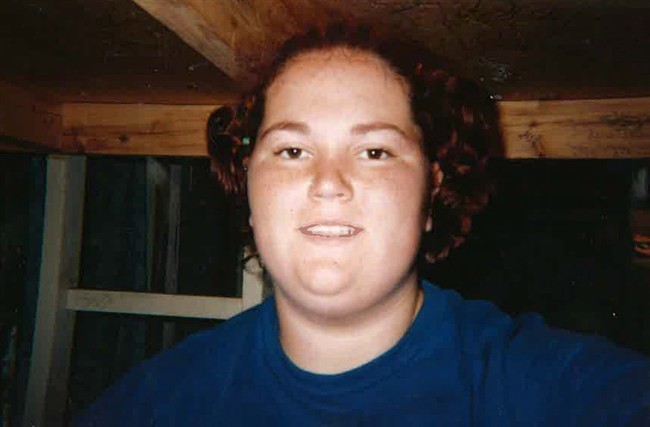TORONTO – A teenage inmate appeared desolate and in deep distress about a month before she choked herself to death in her segregation cell, a prisoners advocate testified on Tuesday.

Kim Pate, executive director of the Canadian Association of Elizabeth Fry Societies, said she visited with Ashley Smith – through her cell door – on Sept. 24, 2007.
“I would describe her as looking pretty hopeless and dejected,” Pate said. “I was concerned she might be at risk to herself.”
At that point, Smith had been deprived of all cell effects – with the exception of a security gown – for three or four days, ostensibly because she had a piece of glass she was refusing to give up.
That meant no blanket, mattress or hygiene products.
Pate, who has extensive experience advocating for female prisoners, said she felt strongly the teen needed to get out of prison and to a hospital.
Smith, 19, reluctantly agreed to let Pate help draft a formal grievance. A guard had to witness the paperwork because the inmate was not allowed a pen to sign it.
The grievance went into a special box, which was not opened until two months after Smith, of Moncton, N.B., choked herself to death Oct. 19, 2007, while guards stood by and watched.
For extensive coverage of the Ashley Smith inquiry, click here.
- Roll Up To Win? Tim Hortons says $55K boat win email was ‘human error’
- Bird flu risk to humans an ‘enormous concern,’ WHO says. Here’s what to know
- Halifax homeless encampment hits double capacity, officials mull next step
- Ontario premier calls cost of gas ‘absolutely disgusting,’ raises price-gouging concerns
The inquest has heard how Smith, who was prone to self-injury and acting out, was shunted from segregation in one institution to isolation in another – restarting the clock each time – something Pate said was illegal.
Pate noted the Arbour inquiry recommended in 1996 an end to long-term isolation, and either judicial or external oversight for any continued segregation. Prison authorities have not heeded those recommendations, the inquest heard.
She also testified that a UN special rapporteur wants solitary confinement capped at 15 days for adults – zero days for young people or the mentally ill – or be considered torture.
Pate described the difficulty in getting information from Correctional Service of Canada, despite having Smith’s permission to access her personal files.
It took more than three years and two Federal Court orders before prison authorities turned over some of the information Pate had requested in the spring of 2007. By then, Smith was long dead.
Pate first met Smith through the food slot of her cell door at the Regional Psychiatric Centre in Saskatoon at the end of May 2007.
“She appeared younger than her 19 years. She was an energetic young woman. She was quite typical of an adolescent. A bit feisty. She was not disrespectful in any way,” Pate said.
“She wanted to get out of segregation. Wanted to get home, basically.”
Pate said segregation and punitive measures such as restraints and routine strip searches are often counter-productive, especially for mentally ill inmates.
The problem, she testified, is that security needs always seem to trump the therapeutic.
It’s imperative, Pate told jurors, to have teams properly trained in dealing with mental-health issues – not guards – that are able to intervene on behalf of mentally ill prisoners.
Pate said it cost $2 million to keep Smith in custody, money she said that could have been better spent on community supports for her.
“Once you’re in the system, it’s very difficult to recharacterize that behaviour other than as bad behaviour,” Pate said.
“I have an almost 15-year-old daughter. She has said, ‘This could be anyone of us’.”
Pate urged the jury recommend that the inquest reconvene down the road to see what has happened to its recommendations.
Don Head, commissioner of Correctional Service of Canada, is slated to testify on Wednesday.



Comments